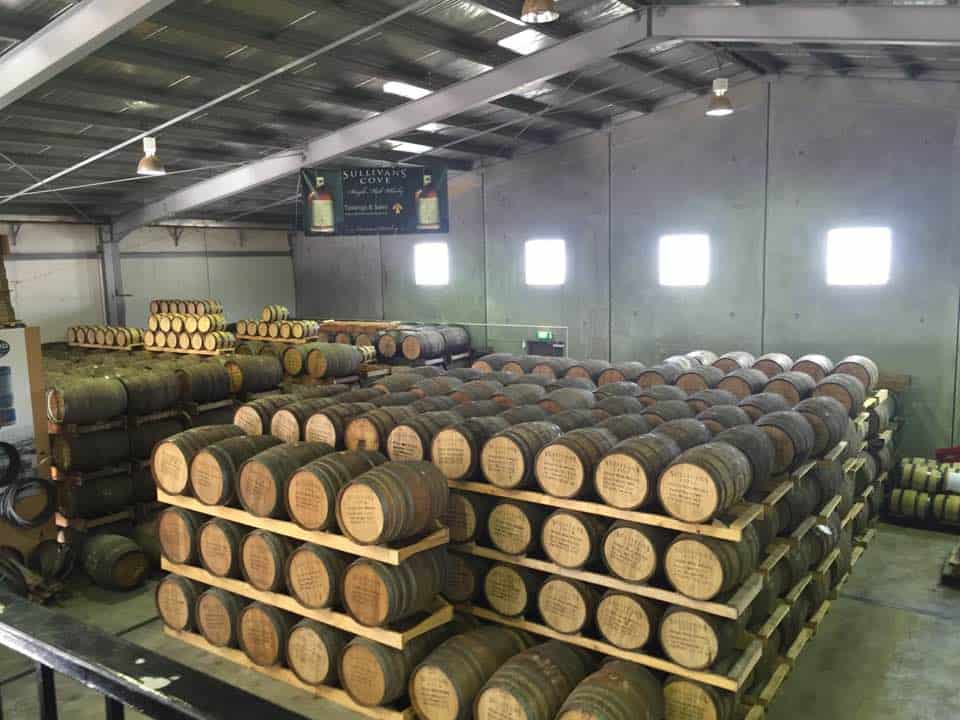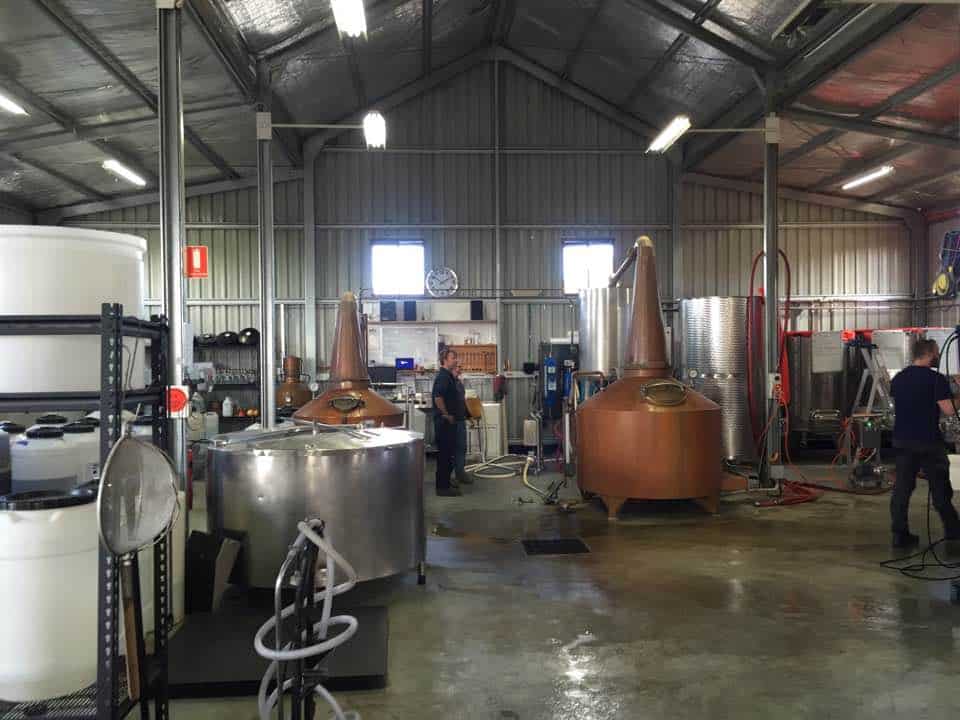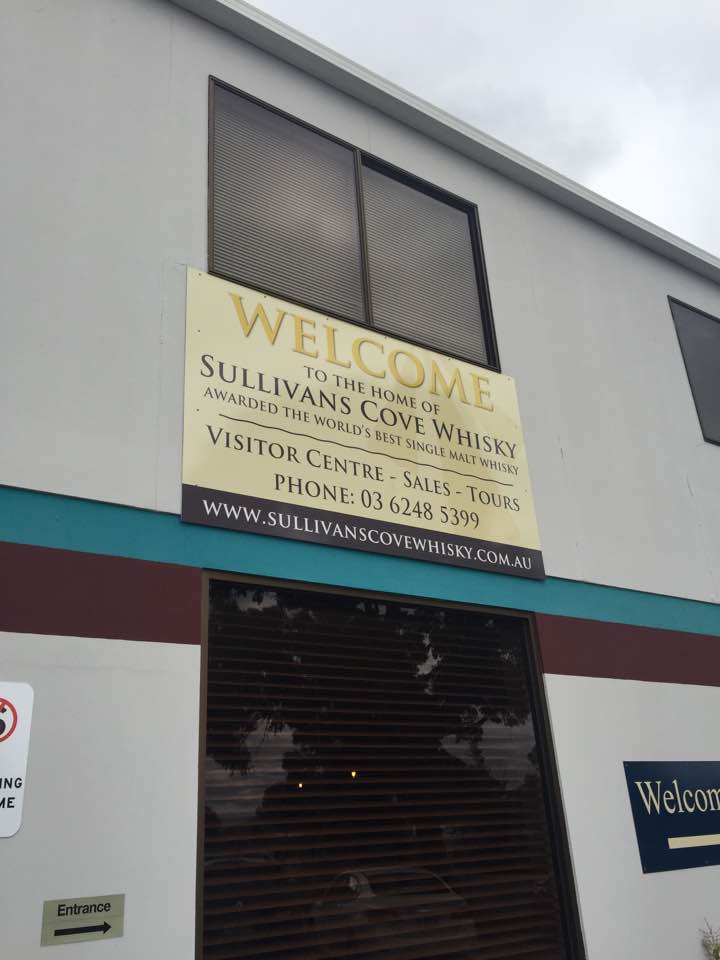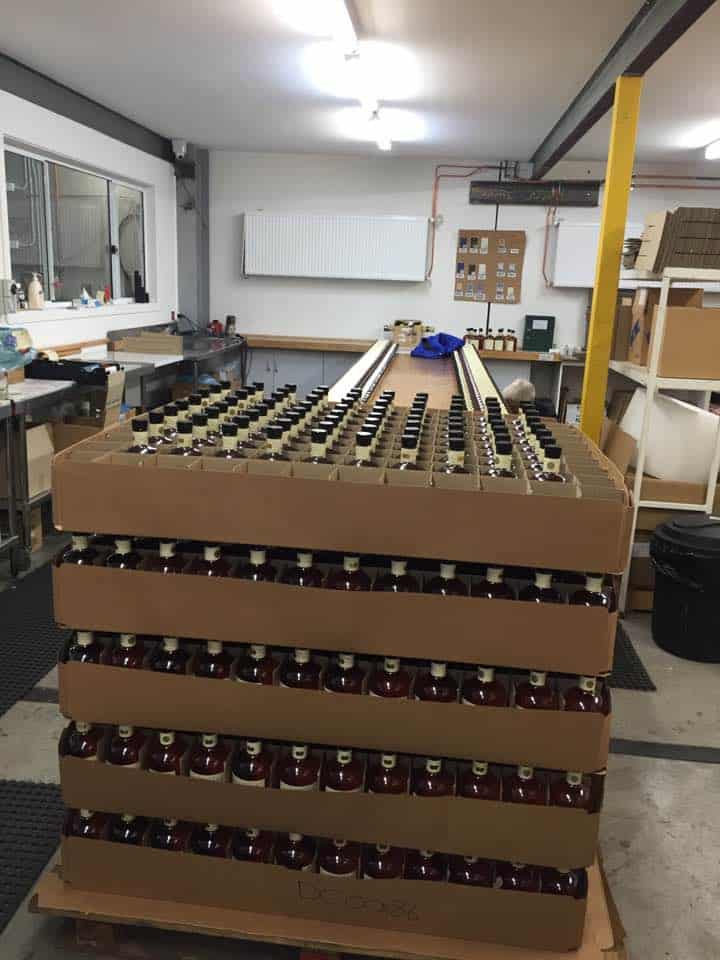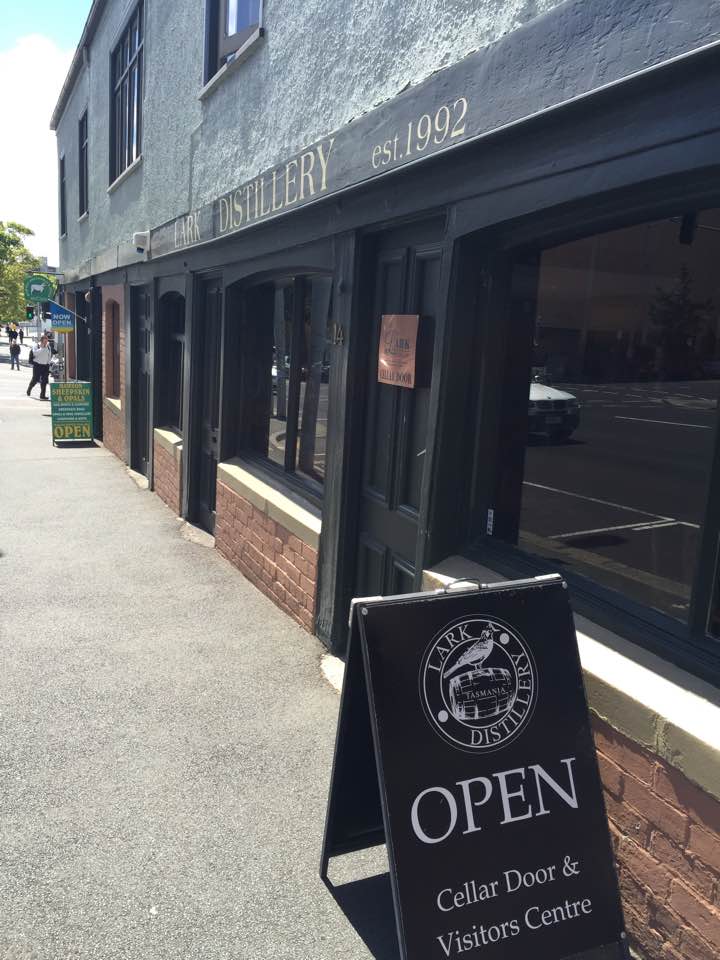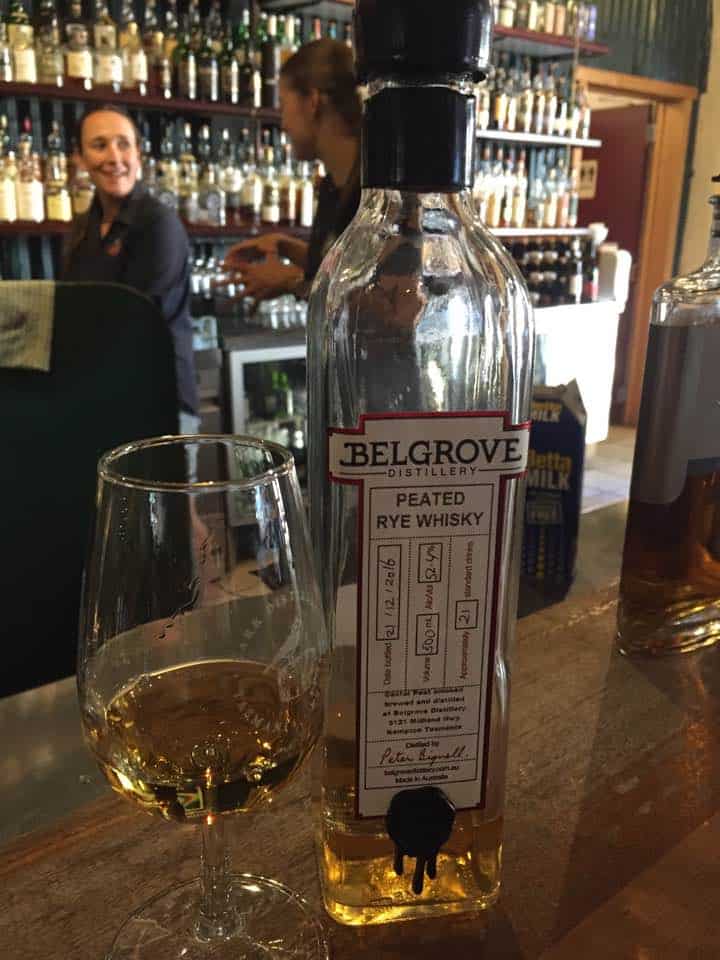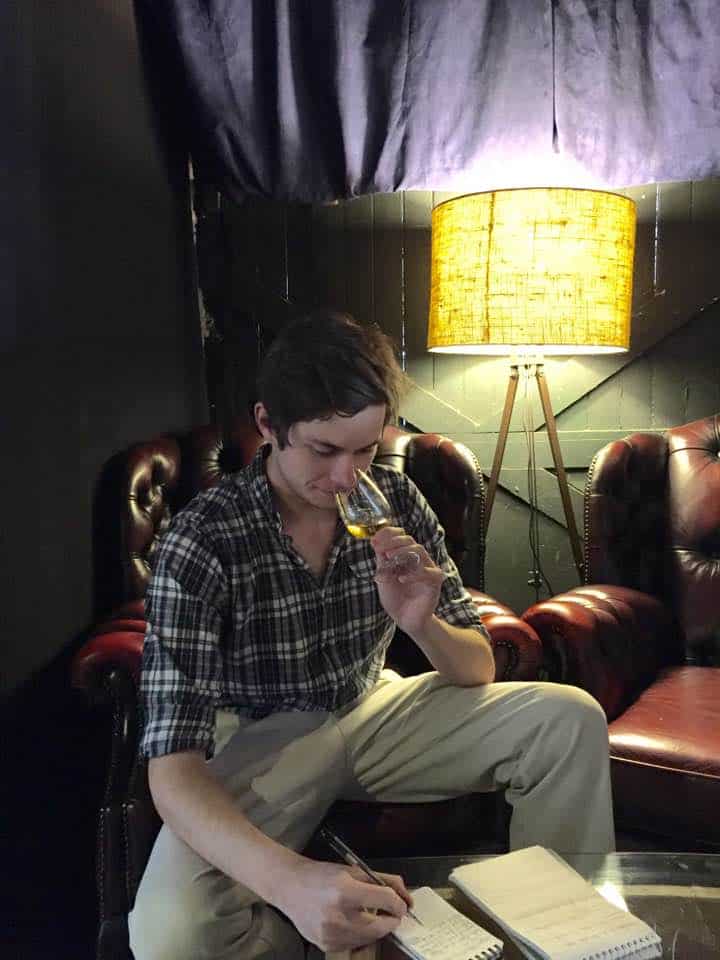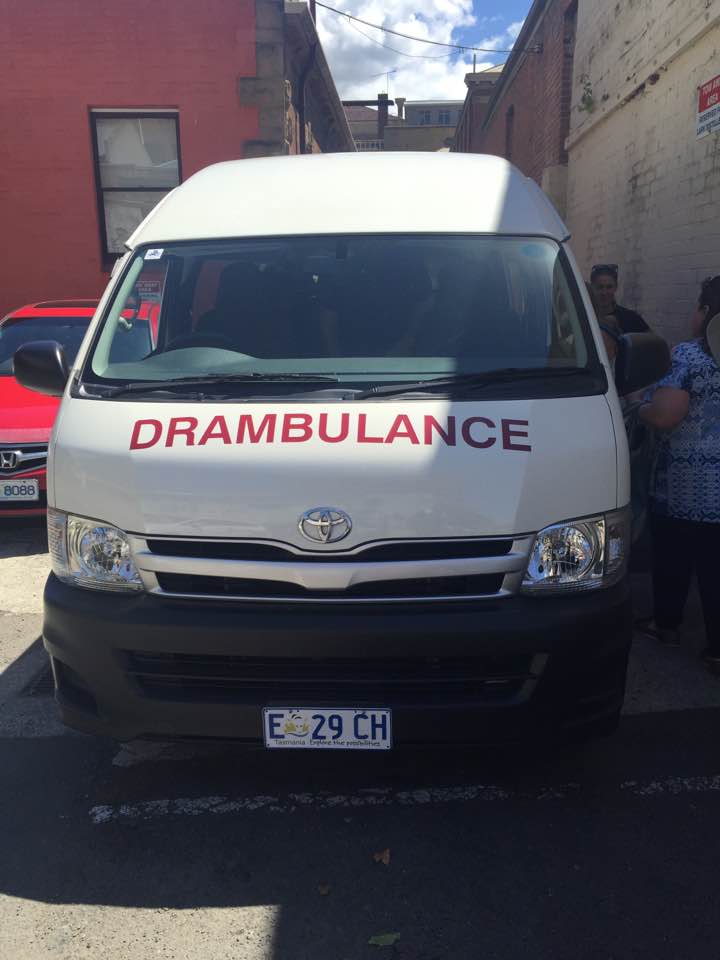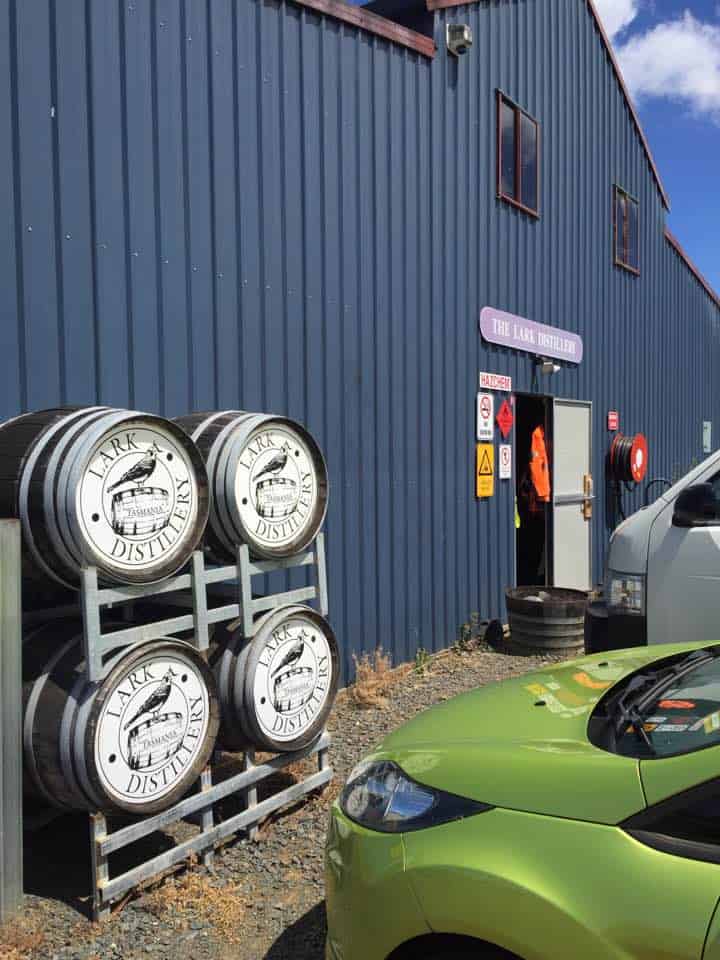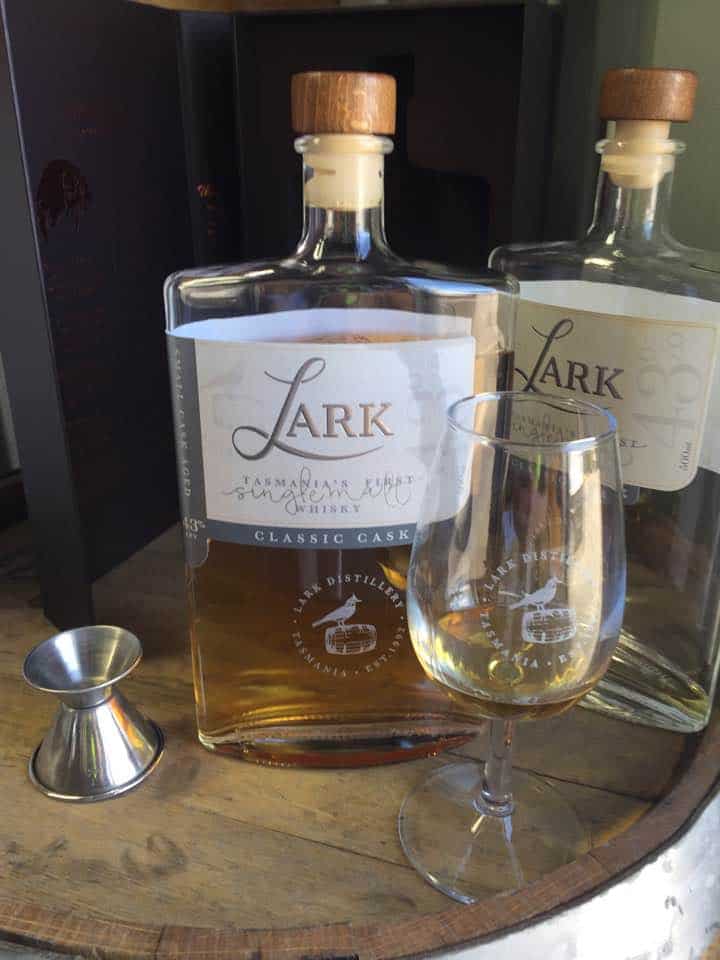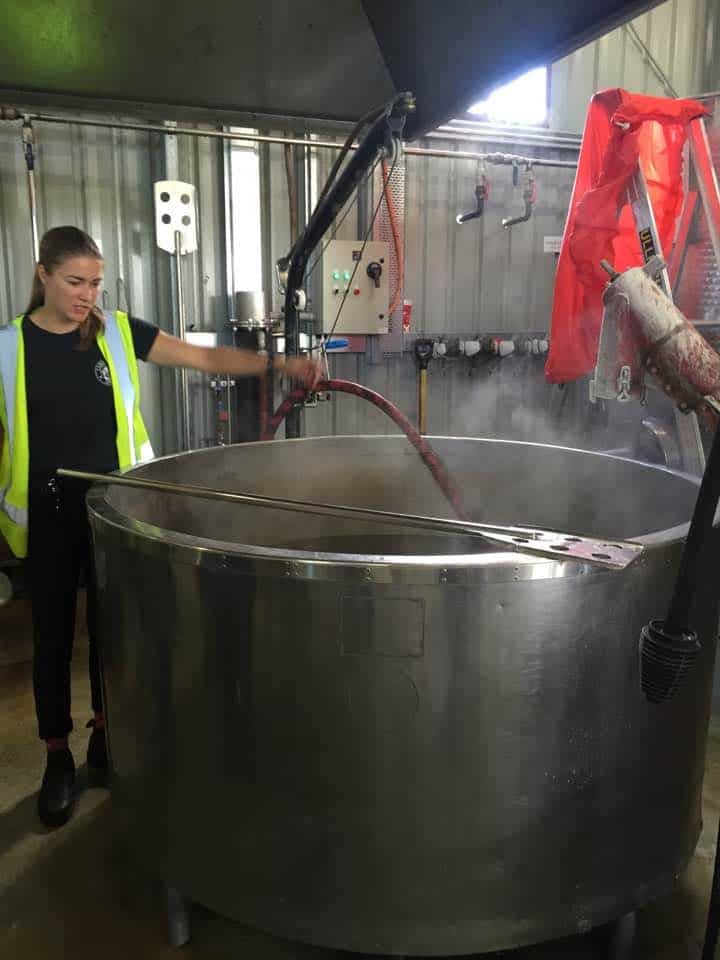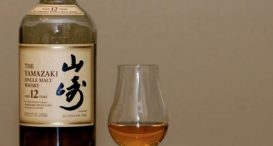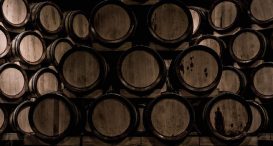Adam, The Whisky Pilgrim, visits some Tasmania Distilleries
let’s begin
I visit my fair share of distilleries. 52 in the last 18 months, if you're counting, which I reckon is reasonable going given I've had to take holiday for every one of them! One feature of these trips has been early starts. I've blearily awoken everywhere from wigwams to the front seat of cars; from Islay hotels to Invernesian sofas.
City centre of Sydney, however, is a new one.
This trip came about by chance. My little sister is studying in Australia this year; not fully sure why, as she normally studies Sciences at Nottingham… In any case, the upshot was that my parents and I found ourselves planning our first ever jaunt Down Under. I’d say that it was more about seeing Vicky than it was about getting a couple of weeks of sunshine and adventure, but the year I lived unvisited in Inverness and Dundee rather speaks for itself…
You’ve probably heard that Australia is in on the whisky scene by now. If you haven’t, then where were you two weeks ago when I wrote my Starward review? That particular bottle came from Melbourne, but the place that gets really raved about by folks in the know, and by Soho hipsters who like to sound on-trend, is Tasmania.
So I dug my heels in when we were planning our trip. I wanted to get out to Tasmania for a few days, get amongst the whisky scene, and see what was being done and by whom. My mother, who was planning the trip as a General might a campaign, insisted that one day was all that could be spared.
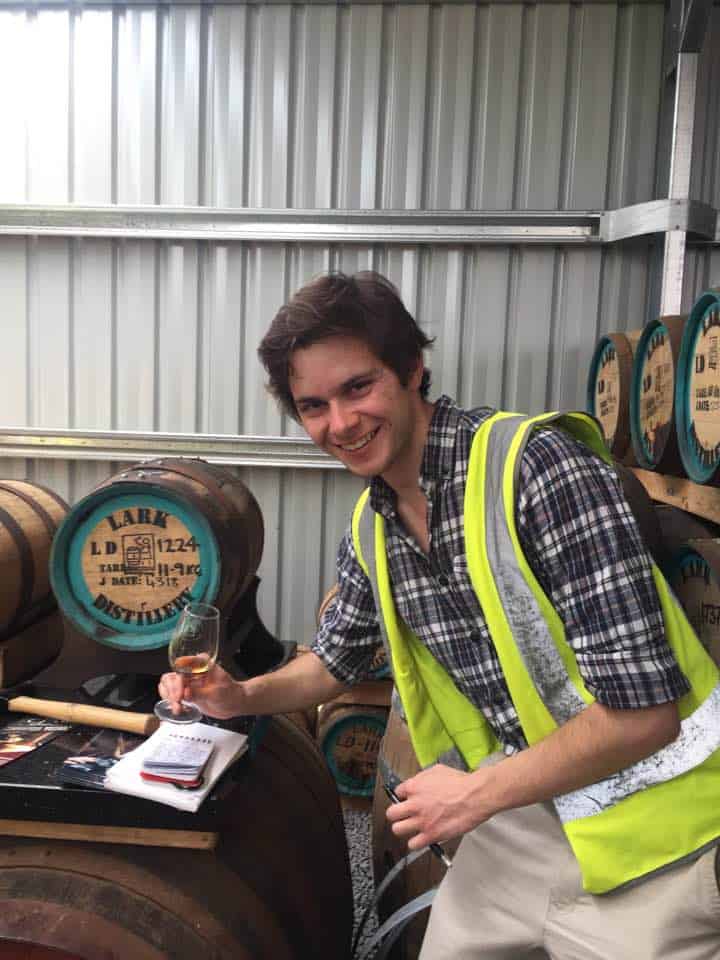
Which led, a fortnight ago, to my alarm clock squawking at me in a Sydney hotel and to an early flight taking us for a rather intense day trip.
Such necessary brevity meant that I had to be selective on my tours, and that I couldn’t roam too far from Hobart airport. I’d have loved to have seen what Peter Bignell does with his home-grown rye, but it would have taken too long. I’m intrigued by the notion of the stainless steel stills at Hellyer’s Road – how do they get sulphur out of the spirit? – but again, not an option.
Eventually I made my choices, so shortly after touching down in beautiful Tasmania (whose scenery is like a fusion of Scotland and the Mediterranean) I found myself at the front gate of The Tasmania Distillery, home to Sullivan’s Cove.
Of the 22 distilleries on Tasmania (yes, 22!) Sullivan’s Cove is probably the most internationally famous. (I know it’s The Tasmania Distillery, but I’m going to call it Sullivan’s Cove from this point to avoid confusion.) There would have been some dispute about this until recently, but in 2014 one of their French Oak Single Casks was awarded World’s Best Single Malt by the World Whiskies Awards.
Since then Tasmanian whisky in general, and Sullivan’s Cove in particular, has enjoyed rather a moment in the sun. Names like Lark and Overeem have started appearing on the shelves of London bars for the hipsters to try once and then go back to Japanese. Demand has exceeded supply to the degree that three casks-worth of Overeem can sell out in 20 minutes, with a huge list of disappointed customers failing to get their hands on it.
And that supply is not a big one. Sullivan’s Cove, I was told, is the second biggest distillery on the island, behind Hellyer’s Road. Last year they filled about 18,000 bottles.
18,000! I can’t begin to stress how small a quantity that is. But to give you some idea, Highland Park’s recent ‘Fire’ edition, described as ‘limited and exclusive’ was 28,000 bottles. Kilchoman, who by Scottish standards are tiny, make comfortably over 100,000 litres of spirit per year.
The natural upshot of this size:demand ratio is some pretty ambitious pricing. Don’t expect much of a Tasmanian whisky in the UK for under £100 a throw – and a few go to well beyond that. A bottle from that French Oak Single Cask range – not the award-winning barrel, naturally – retails somewhere in the region of £300.
If you’ve read my posts for Great Drams, or on their former high horse, The Whisky Pilgrim, you’ll know my thoughts concerning price and value. I understand why it happens, of course, but that doesn’t mean I have to like it. I’ve certainly never spent £300 on a bottle of whisky; couldn’t afford to if I wanted to. And of course, a distillery charging those sort of prices has a very great deal to deliver. So I was fascinated to learn whether it did.
Funnily enough, the distillery I was initially put in mind of on arrival was the last Scottish place I visited – Wolfburn up in Thurso. Much like Wolfburn, Sullivan’s Cove operate out of a small industrial unit. But in Sullivan’s Cove’s case literally everything is under the same roof, and in the same room – including all their maturing stock. If you’ve ever been to a Scottish distillery before, that alone should give you a sense of scale.
The number one law of The Whisky Pilgrim reads “thou shalt arrive unnecessarily early,” and a different hemisphere wasn’t going to change that. So forty minutes before tour began I was given a glass of water and directed to a seat in their charming visitor centre. It’s a rather nice place to sit; I don’t think I’ve ever seen such a wide variety of chairs! Everything from chesterfields to ‘doctor’s waiting room-style’, via what I can only describe as a pseudo-regency-period throne. Anyway, no prizes for guessing where I sat. It was gold for God’s sake.
Talking of prizes, Sullivan’s Cove have adorned the wall with theirs, and there are rather a lot. Certainly a good number for a range that effectively numbers three. Besides the French Oak they’ve an American Oak Single Cask, and their ‘Double Cask’, which works out about 70:30 in American Oak’s favour.
Something worth noting about the French Oak incidentally – in Scotland it would probably be labelled “Port Cask”, as that was what the barrels previously held. Actually, being legal and proper, they held nothing of the kind. They held an Australian Fortified Wine modelled on Tawny Port, and as a wine man by trade, that distinction matters to me. Bit clunky for a label, I admit, but based on my subsequent trip to Lark I can confirm that the PDO laws of the Douro Valley mean the square root of Jack to Australian whisky makers. Oh well. Probably no harm done!
My guide for the day was Ryan, an incredibly friendly, knowledgeable and enthusiastic young bloke. In fact everyone around the distillery seemed pretty young – ok, ‘look who’s talking’ I guess, but you get my drift. Pretty much everyone was around my demographic, and the only place I’ve been before like that was Eden Mill, near St Andrews. Which, incidentally, is another small-scale operation cut from similar cloth to Sullivan’s Cove.
Idiosyncrasy number one: Sullivan’s Cove has one still. Not one pair of stills; not one wash and one spirit still: one still. Their wash comes from a local brewery, Cascade, who also used to do Lark’s, and it goes through the still, comes out as low wines, then through the same still it goes again. Said still has a capacity of 2,500 litres. For some frame of reference, Glenfiddich describe theirs as ‘unusually small’ – and by Scottish standards they are – but they still stand at 9,500 litres capacity.
From a vantage point on a balcony, Ryan was able to point me towards the entire operation; still, casks, bottling line and the vats containing the gin that Sullivan’s Cove also make. (Using the same still. That still earns its keep.) For some reason I was surprised to learn that each whisky bottled by Sullivan’s Cove is over 10 years old. When a cask hits its decade, the contents are tasted by everyone at the distillery to assess where the whisky inside is at. Since the French Oak and American Oak expressions are both Single Casks, they come with their own sticker detailing distillation and bottling dates. In the case of the Double Cask (which usually comprises four different casks) they use the dates of the youngest constituent. The Double Cask I tasted was just shy of 16 years old.
I’m not sure why that surprised me so much; I guess I’d just got used to the notion of New World whiskies being a fair bit younger than their Scottish or Japanese counterparts. Shows what I know…oh, and by the way, the legal minimum age for Tasmanian whisky is 2 years, and they work at about a 3% evaporation rate. Which was a shade or two lower than I expected.
On to those whiskies then. Ryan kindly gave me a taste of all of the core range. That included the gin, which smells like lemon and tastes like aniseed, if you’re wondering!
Sullivan’s Cove Double Cask – Lots of nose for 40%ABV. Vanillas and honeys initially. Rather fruity too, and the fruit grows as the glass sits. On the palate a touch of sweet spice emerges, and the development is demonstrated through a certain maturity of oak. Mouthfeel also surprisingly creamy for the strength. No burn though; medium intensity of flavour. More of the vanilla and honey, plus a big injection of malt. Some tablet too, and a splash of citrus providing lift and refreshment. Very clean. Decent balance. One for Balvenie fans. 40%ABV
Old Whisky Pilgrim readers will know that I only usually do a full note for a distillery’s flagship expression when I write up my tours. But since you’re probably wondering how the other two tasted, I’ll summarise by saying that I thought the French Oak was the pick of the bunch, and that the American Oak, whilst very tasty, was – to my palate – the least characterful of the three. Very clean; everything you’d expect from an 11-or-so-year-old ex-Bourbon cask malt…but no real surprises. Didn’t have the idiosyncrasies of the Double Cask or the French Oak. Mind you, it was Ryan’s favourite, and he knows Lark better than I do!
Hopped into a taxi which the fantastic guys at Sullivan’s Cove kindly phoned for me, and plunged through the coastal Tasmanian fields towards Hobart, the island’s capital. Tour number two of the day was Lark, the first of the new age of Tasmanian distilleries. Prohibition ended whisky production on the island over 150 years ago, but in 1992 Bill Lark persuaded the powers that be to let him start crafting aqua vitae again, and the rest is history.
A new experience for me in more ways than one, because you don’t actually drive yourself to the distillery at Lark. Instead you make your way to their “cellar door”, from whence they chauffeur you to where the magic happens in a minibus with a terrific pun on the bonnet. (See pictures below…) In this instance it’s well worth your while turning up early, because the bar at the cellar door is quite something. I’d venture they have a couple of hundred bottles open on the shelves; predominantly Scotch, but with a good number from elsewhere, including a strong ‘home showing.’
Taking a “when in Rome” attitude, Pilgrim snr and I selected a couple from Belgrove; the farm distillery that grows all of its own rye onsite. We made our way through the peated and unpeated variants, and I can safely say that I’ve never tasted anything like either of them in my life. Good luck hunting any down in the UK, but if you do spot a bottle, don’t hesitate. Particularly if it’s the peated rye.
Behind the bar was Diana, who was full of enthusiasm for Belgrove’s kit, and very chatty when we started swapping stories of our respective distillery visits. She’d recently made a trip to Scotland, and taken in 15 or so distilleries, so very much someone after my own heart! It turned out that she was also the guide for our tour, so I can only apologise to everyone else on the Drambulance for calling shotgun and continuing to compare notes!
I’ve been to a lot of distilleries by now, but Lark shoots straight to number one on my ‘best sited’ list. Not only does it have an absolutely stunning sea view, but it is cheek by jowl with a large vineyard. Whisky and wine literally next door to each other. If that isn’t the dream then your dreams are wrong.
Hi-vis jackets donned, we made our way into the first warehouse, wherein the stills and mash tun are kept. The Lilliputian theme continued; Lark’s mash tun is about the size of a hot-tub, though I’m not sure I’d be keen on drinking a whisky whose wash had been used for that purpose. Since it’s a manually stirred mash tun, potential jacuzzi enthusiasts would also be subject to attack from a rouser. All in all I’d leave it as is.
Around the tun were a series of tiny stainless steel washbacks at various stages of fermentation. We had a taste from two, as well as a sip of the newly mashed wort. Not sure I’d make a habit of drinking them! We were then taken through the distillation process by CJ, the distillery manager, who had originally made his way over from Scotland on hearing about Lark’s operation.
Before tasting the new make spirit we were given a glass of Lark’s flagship, the Classic Cask. An apology here. Usually at this point I’d present my note for your consideration. But as it was a beautiful day we were outside at this stage, basking in the warm agricultural air. And on this warm agricultural air there floated a warm agricultural smell, with the upshot that my nostrils were charged with all sorts of aromas for which the whisky was not responsible, and for which the good people of Lark would not thank me were I to incongruously record them. So I can tell you that the Classic Cask was of medium intensity; that it featured characters of butterscotch, orange and light smoke, and that it would be right up the street of West Highland whisky fans. And I can tell you that Tasmanian farmers don’t stint on fertiliser. But I can’t tell you much more than that!
After CJ had talked us through the spirit Diana took us to one of the cask houses, where several delicious treats were waiting. Firstly the ‘Port Cask’ expression from Lark’s ‘sister distillery,’ Overeem. This was followed by a taste of Lark whisky straight from a tiny ‘Port cask’. In both cases I’m sure you can guess why I’ve used quotation marks, but the whiskies were truly stunning. The Overeem, which was bottled at only 43%, could have used a bit of extra zing to counterbalance the huge weight of flavour and body, but the cask strength Lark was spectacular. In fact, based on my day, I’d say that Australian ‘ex-Port’ whiskies suit me a lot better than Scotch ex-Port does on the whole, and it’s a shame they can’t be labelled loudly and proudly as ex-Australian fortified wine. Or something a little less unwieldy. But I guess more people have heard of Port…
Due to the nature of our flights, my family and I had to flee at this point – though not before sampling Lark’s gin selection. Out of respect. For the record, I genuinely don’t think I’ve had a more enthusiastic, knowledgeable or friendly tour guide than Diana, and given the guides who have led me round distilleries previously, that really is saying something. Massive thanks to her, to CJ, and to the rest of the Lark team from myself and all of my family.
It obviously wasn’t long enough of a trip.
Our flight from Sydney touched down at around 9:45 in the morning; by 5 in the afternoon we were back on the plane. Barely seven hours spent in Tasmania. I felt very strongly at the time, and still do now as I type, that I’ve never been more reluctant to leave somewhere in my life.
Because, quite apart from the stunning scenery and the gorgeous climate, Tasmania has something incredibly vibrant and magical and extraordinary to witness. Within my lifetime – within twenty-four years – they have created a whisky culture from nothing. The girls and guys at the twenty-two distilleries are doing something that no living Australian has done before, and what’s more, they’re doing it sensationally well. In the miniscule amount of time I spent there I got a flavour of the passion, the pride and the boundless dynamism of the Tasmanian whisky industry. It’s inspirational to witness, exhilarating to be around, and if someone there were to offer me a job tomorrow I can’t say I wouldn’t be over like a shot. They’re building a legacy, and they’re building it on a labour of love.
The thing is, I’m still not sure about the prices. I know it’s boring of me; I know that the scale of production necessitates them; I know that Australian alcohol tax laws are pretty draconian, and I know that the distilleries sell out at those prices – so what’s the problem? Well I think the problem for me is that, when I tell my friends and family about Tasmanian whisky, I won’t be able to recommend that they go out and buy some. It’s out of their price league – and mine – every single bottle. If they were Scotch I reckon the Sullivan’s Cove Double Cask and the Lark Classic Cask would hover somewhere between £35-£55, and at that price they’d be up there with the very best. I’d be telling everyone I knew to buy, buy, buy – just as I have been with Melbourne’s Starward from the other week.
It’s disgustingly unromantic of me to want some massive distillery churning out millions of gallons of whisky just so everyone can have a taste. And I don’t want that; the atmosphere and the buzz around Tasmania is so optimistic and so alive with blissful vitality; how could anyone want that sensational, addictive ethos to be changed? But talking to Ryan and to Diana, it sounds as though the success stories of Tasmania are going to grow and grow in the next few years; bigger premises, higher production – same staff. If that is the case – and my God I hope it is – then perhaps we’ll see some of the prices start to creep back towards the more affordable end of the spectrum.
I can’t wait to see what happens next on the Tasmanian whisky scene – and I’m absolutely desperate to go back. But next time it’ll be a proper visit; I want to see it all. I’m greedy like that.
Oh, and Ryan and Diana – if you’re reading this, and by any chance find yourself in my hemisphere sometime, sincerely please do give me a shout. Because it isn’t just Tasmania with a burgeoning whisky scene. We’ve got one closer to home, too. The English are coming. But more on that another time.
Cheers!
